For Plant Identification, Look At The Leaves First
For Plant Identification, Look At The Leaves First
If you are looking to identify a plant for yourself or others, here are a few things to keep in mind.
It’s now common practice to post photos of plants online and ask “the hive mind” for identification. We see such requests on the Cape Cod Gardening Facebook Group all the time. People are wonderfully generous about telling the person who posted what the plant is, but often times people guess based on a flower or fruit, and that identification, as well meaning as it was, isn’t necessarily accurate.
What’s the problem with an inaccurate ID? First of all, the person requesting information won’t have the right name and so won’t be able to find accurate information about the care of that plant. If they think it’s a perennial that can be cut to the ground, for example, and it’s actually a woody shrub that will die if it’s treated that way, they might kill their plant by cutting it back. Or if the plant is identified as a sun loving flower and it’s actually something that will do better in shade, the gardener might waste valuable time and energy planting it in the sun where it won’t do well. And heaven forbid if a plant that’s not edible is identified as something you can eat!
When you want to ID a plant, and think you might have a good idea, take a good look at the foliage. Then go to Google Image and type what you think the plant is there…compare the leaves of your plant or photo to the foliage you see in all the photos that come up. Do they look the same? Take a look at this example:
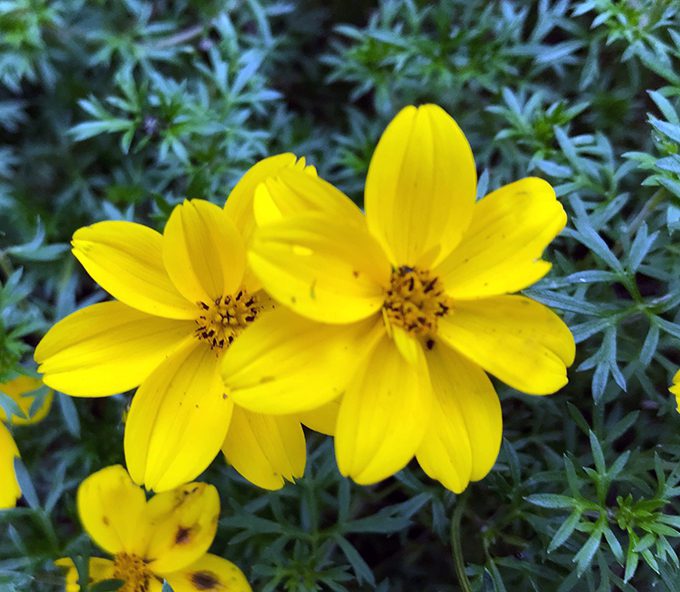
This is a flower that many might say is a Coreopsis. But if you go to Google Image and type in “Coreopsis foliage” and compare the leaves in this picture to those that come up, you’ll see that this isn’t a Coreopsis at all. This is an annual Bidens.
Don’t just compare the leaf shape, but look to see how those leaves are arranged on the stem. Leaves can be opposite each other, alternate along the stem, or whorled, which means that there are several around the stem coming out of the same leaf node. This is an important thing to know about shrub and tree identification. Here’s a couple of examples.
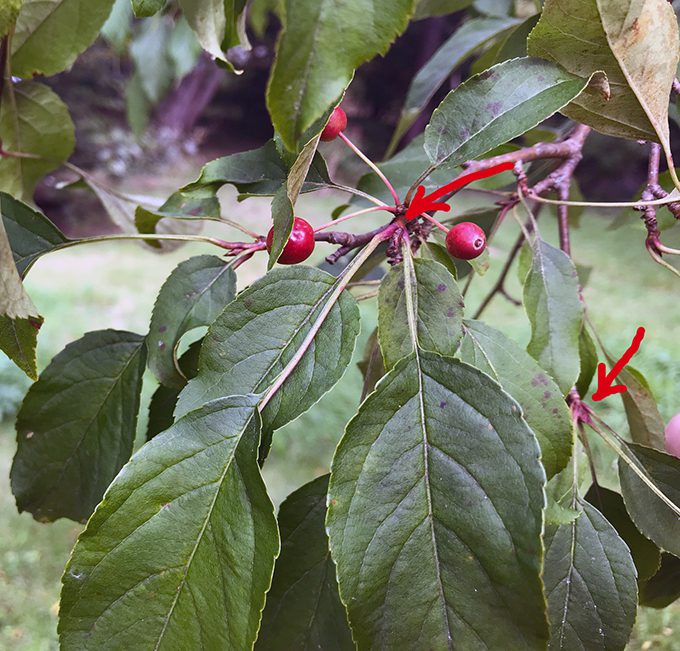
This is a crabapple. Recently in an online forum a crabapple was identified as a cherry based on the bright red fruit. But look where the red arrows are pointing in this photo. You can see that the leaves are in pairs, opposite each other. Apple trees are some of the few trees that have opposite leaves. Check out the leaf arrangement of the cherry below to compare.
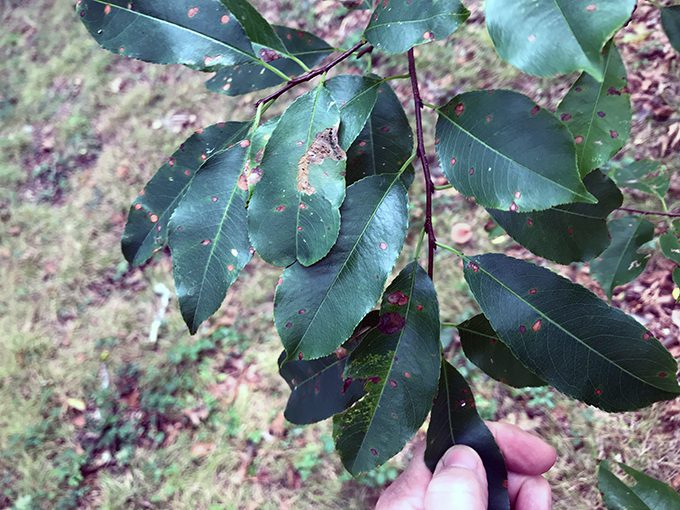
This is a cherry tree. The leaves on this tree are alternately placed along the stem. So if someone was wondering if the tree with the red fruit in their yard was an apple or a cherry, they could type in “apple leaves” or “cherry leaves” in Google Image and see examples to compare to the leaves on their tree.
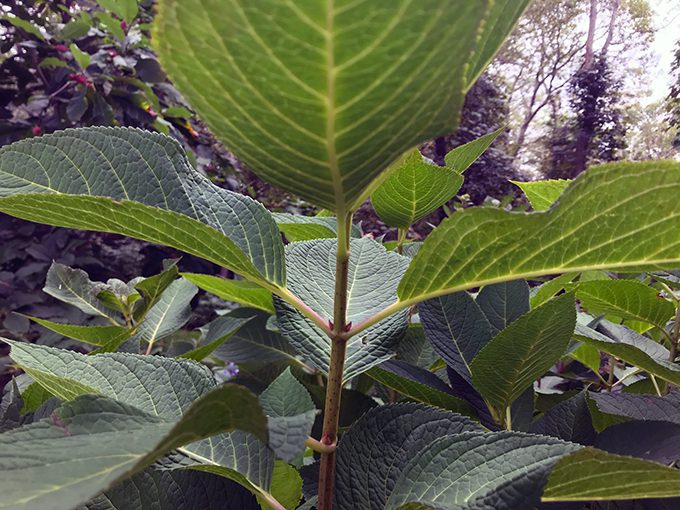
Hydrangeas have opposite leaves…this shrub has leaves that are easy to see the placement on the stem.
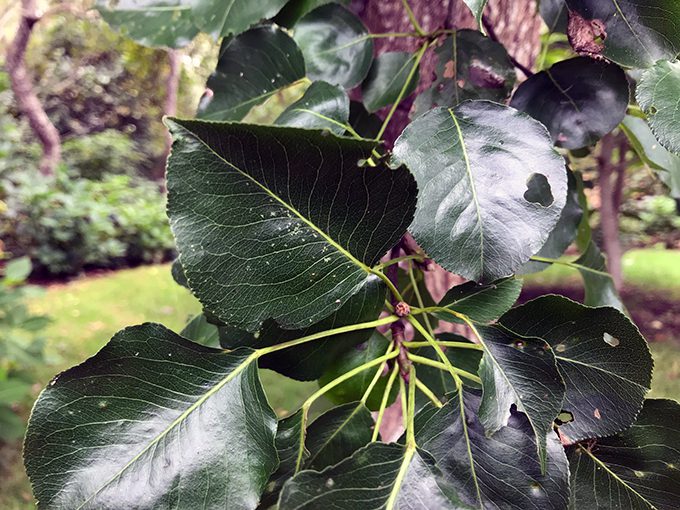
Some plants aren’t as easy to tell what the leaf arrangement is. This is a pear tree. The leaves on pears are actually alternate, but they are close together and arranged all around the stem, making it difficult to see clearly. But the leaf shape can be compared to other images of tree foliage online.

Identifying something from a closeup photo can be difficult. With this picture it’s hard to say how large this is…and is it a flower? Without seeing the foliage for both comparison and scale, it’s hard to say what plant this is. It’s actually the seed head on a Clematis vine, and it’s quite small. If you want something like this identified from a photo, be sure to include a shot of the entire plant or a clear shot of the leaves and how they are arranged on the stem.
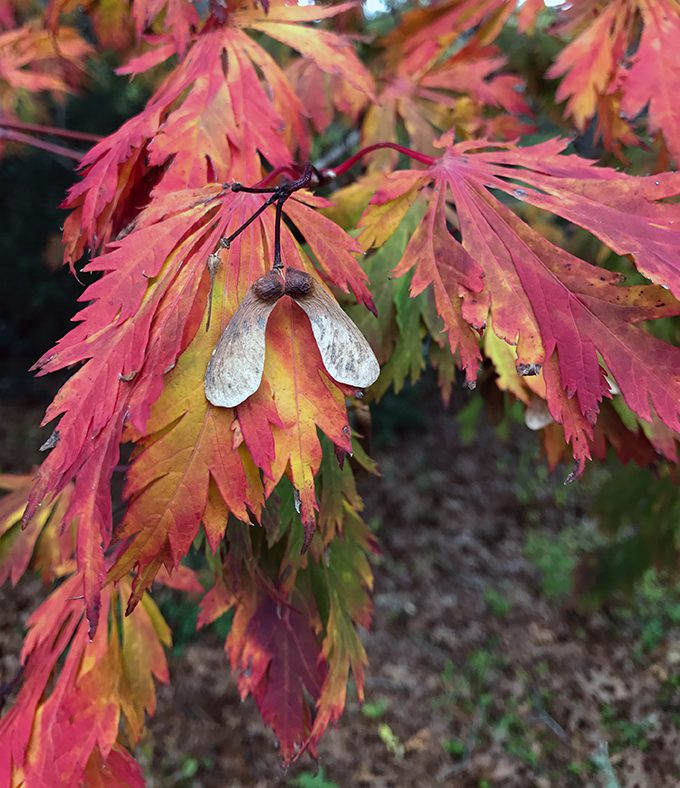
Finally, seeds can be helpful to identify plants as well. This is a maple tree, Acer japonicum aconitifolium, sometimes called Full Moon Maple. If you had this in your yard and wanted it identified, you might search Google Image for “Maple Seeds” to confirm that it’s a maple.
Of course Google Image isn’t going to ID a plant for you, and you have to have at least a starting idea about what the plant is. But by comparing what you think a plant might be to many photos, and looking at the foliage instead of the fruit and flowers, you’re likely to come closer to an accurate identification.
We frequently have customers come into the store asking for a plant to be identified. Sometimes we’re able to ID a plant right away, and sometimes the sample needs to be left for another staff member to confirm what the plant is. Note: if you bring in a plant sample, please have it in a plastic bag and make sure to drop it off when it’s fresh. Put your name, email and phone number on the bag so someone can get back to you.
Subscribe To Our Newsletter
Sign up for our weekly email about sales and events.
